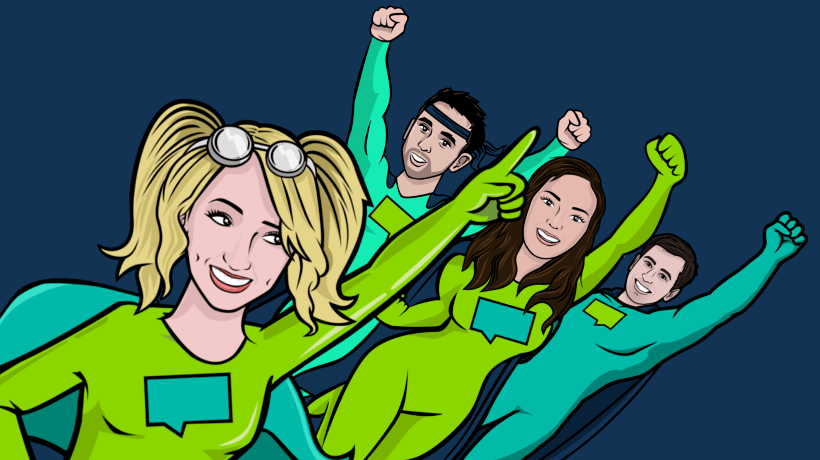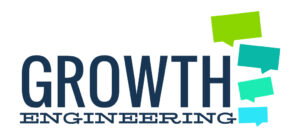How Learners Filter Down Behavior Change Using Learning Campaigns
In a world that’s ever-changing, organizations need to adapt quickly if they are to hold on to their competitive edge. It’s not as easy as pushing a button marked 'adapt'. and instantaneously transforming the organization. Any big organizational change requires a change in behavior from everyone in the team.
Creating behavioral change is everybody’s responsibility, but the Learning and Development department has a pivotal role. It’s a training manager’s job to provide the knowledge and tools that learners need to perform. With external changes happening at a faster rate, the traditional one-off training model isn’t up to the task anymore. Learning needs to be a continual process that can flex and adapt as new innovations come to light.
Learning campaigns work by creating engaging learning journeys composed of bite sized content, that learners can access wherever they are, and whenever they like. To understand how they work, you need to know how new ideas are diffused within a system.
Diffusion Of Innovation
Everett Rogers came up with his Diffusion of Innovations theory [1] in 1962, but it’s still relevant to today’s information-rich culture. His theory describes the process by which any new innovation is adopted (or not) by the people in a social system.
According to Rogers, there are 4 things that impact the rate of diffusion:
1. The Innovation
In L&D terms, you can think of an 'innovation' as the change in behavior needed to satisfy the goals of the organization. This can cover all kinds of new learning objectives, from simple policy refreshers to major changes in processes.
2. The Communication Channels
In a learning campaign, your communication channels can take many forms, both physical and virtual. As it’s such an important element in driving innovation, you need a social platform that everybody can contribute to, and engage with.
3. Time
Change happens gradually, and not everybody will adopt a new behavior at the same time. This might seem obvious, but it’s a fact that one-off training interventions tend to ignore. Learning campaigns give you the chance to introduce new behaviors, and reinforce them over a set period. By doing this, your learners can form the habits needed to make these new behaviors stick.
4. The Social System
In the world of corporate training, the social system refers to the culture of the organization. If each department exists in isolation, it will be a lot harder for new ideas and new behaviors to take hold. By simply adopting a campaign-based approach to training, you can encourage a culture of learning and knowledge sharing that will make it easier to implement future changes in behavior.
The Process: How Can Learners Accept Behavior Change Using Learning Campaigns
The essence of a good learning campaign is its persuasiveness. Unlike older training methods, a campaign-based approach acknowledges that people won’t simply adopt a new behavior because they’ve been told to. In a learning campaign, the learner goes on a journey, at the end of which they accept the new behavior and incorporate it in their daily lives.
The journey consists of 5 steps:
1. Knowledge
First, the learner will encounter the new learning objective. They might receive an email notifying them of a new piece of training material, or see a custom banner on the dashboard of their Learning Management System. In larger campaigns, this message could even be reinforced by physical posters, or fliers displayed prominently in the workplace.
2. Persuasion
The next step is to convince the learner to act. You need to make sure that they don’t simply ignore the new training initiative. This was a lot harder to achieve in the old days of once-off learning interventions, but with learning campaigns, you get multiple chances to encourage everybody to participate.
3. Decision
Once they’ve consumed the learning content, it’s up to your learners whether or not they change their behavior as a result. You need to show them the value of the change and make them understand what they can gain from it. Make sure your learning objectives can easily be tied to the individual’s professional goals. If they can see the link between the training and some future promotion, your learners are more likely to engage with it.
4. Implementation
One of the most effective ways to communicate the usefulness of a particular behavior is to show it in action. The beauty of learning campaigns is that you can include a variety of media, including user generated content. Ask your learners to demonstrate the learning objective, by posting a short paragraph or even a video on your social LMS. This gives you a wealth of highly relevant assets that your learners can relate to and identify with. Once they’ve seen the new behavior in action, there’s a better chance of your learners trying it out for themselves.
5. Confirmation
At the final stage of the process, your learners have seen what the new behavior means in practical terms. They can now decide whether to adopt a change in behavior or disregard it. If they take the lessons on board, you can feel free to celebrate, but it’s not the end of the world if they don’t. Since you have an entire campaign’s worth of learner interaction to analyse, you have a better chance of figuring out why the new initiative didn’t have the desired impact.
Final Words
Not everyone will adopt a new behavior immediately. Everett Rogers’ theory relies on new innovations spreading through your organization from one person to the next. The success of the campaign will depend on how effectively the message is passed from the early adopters to those late to the party.
The more engaging your delivery method, the faster this process can occur. It’s up to you to create the ideal learning environment for your organization, and the people within it. Once you have that, the learning culture you’ve always dreamed of might be just around the corner.
Footnote:


